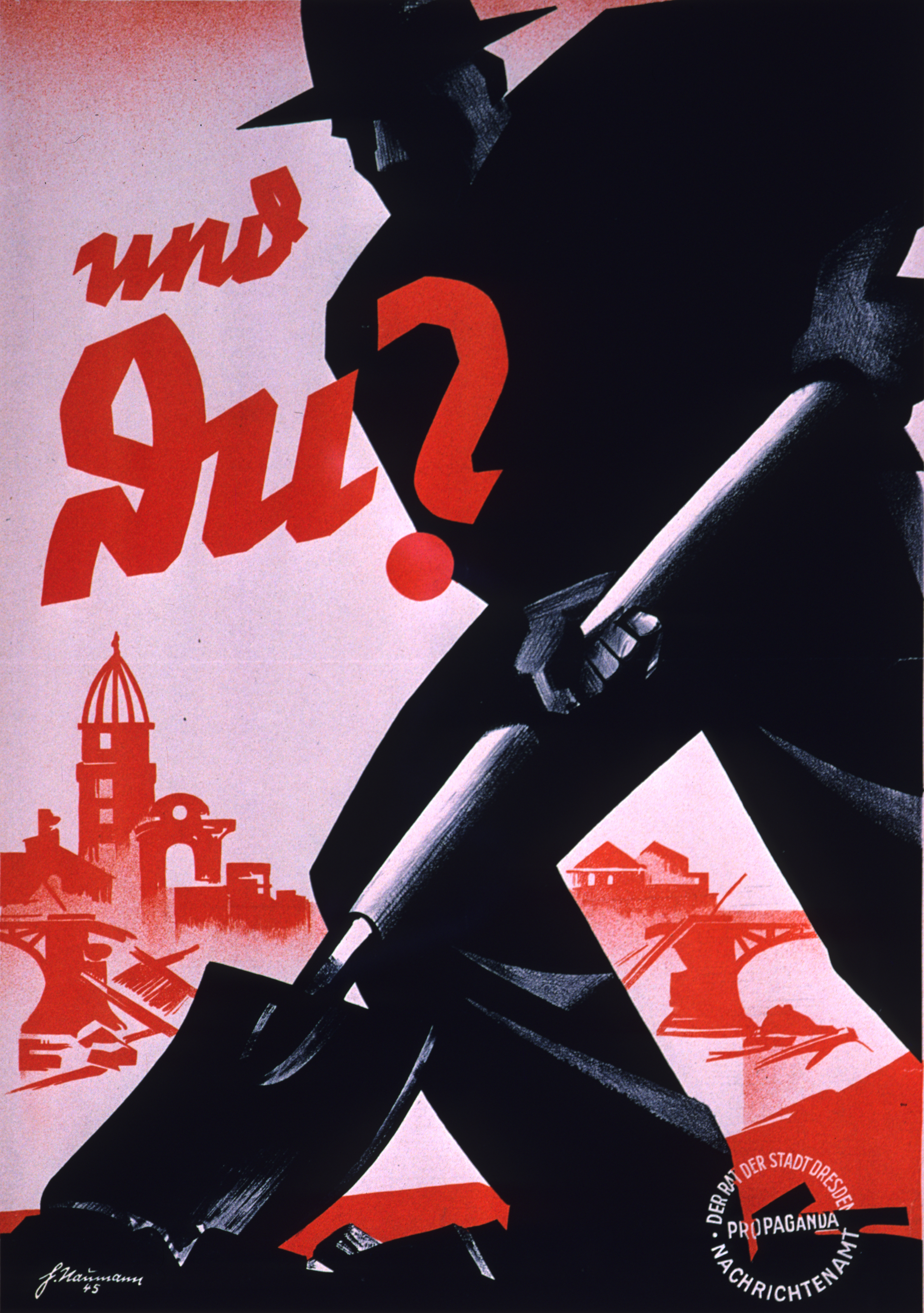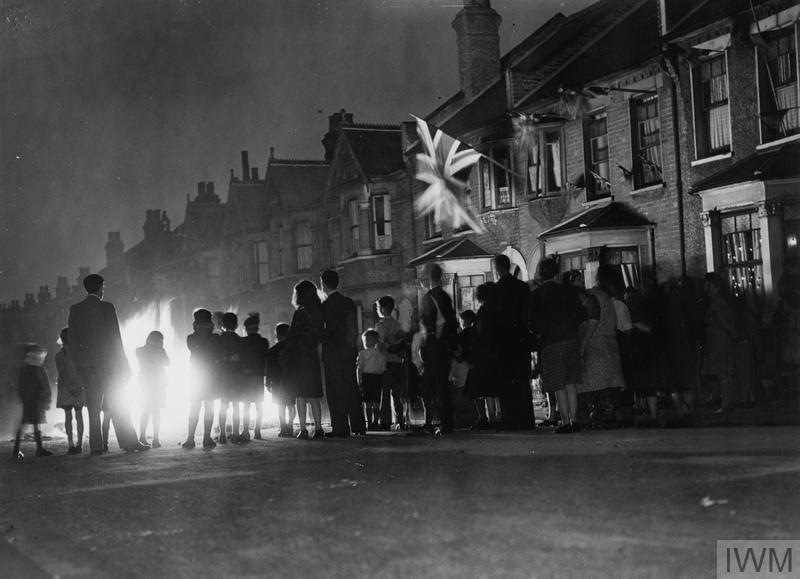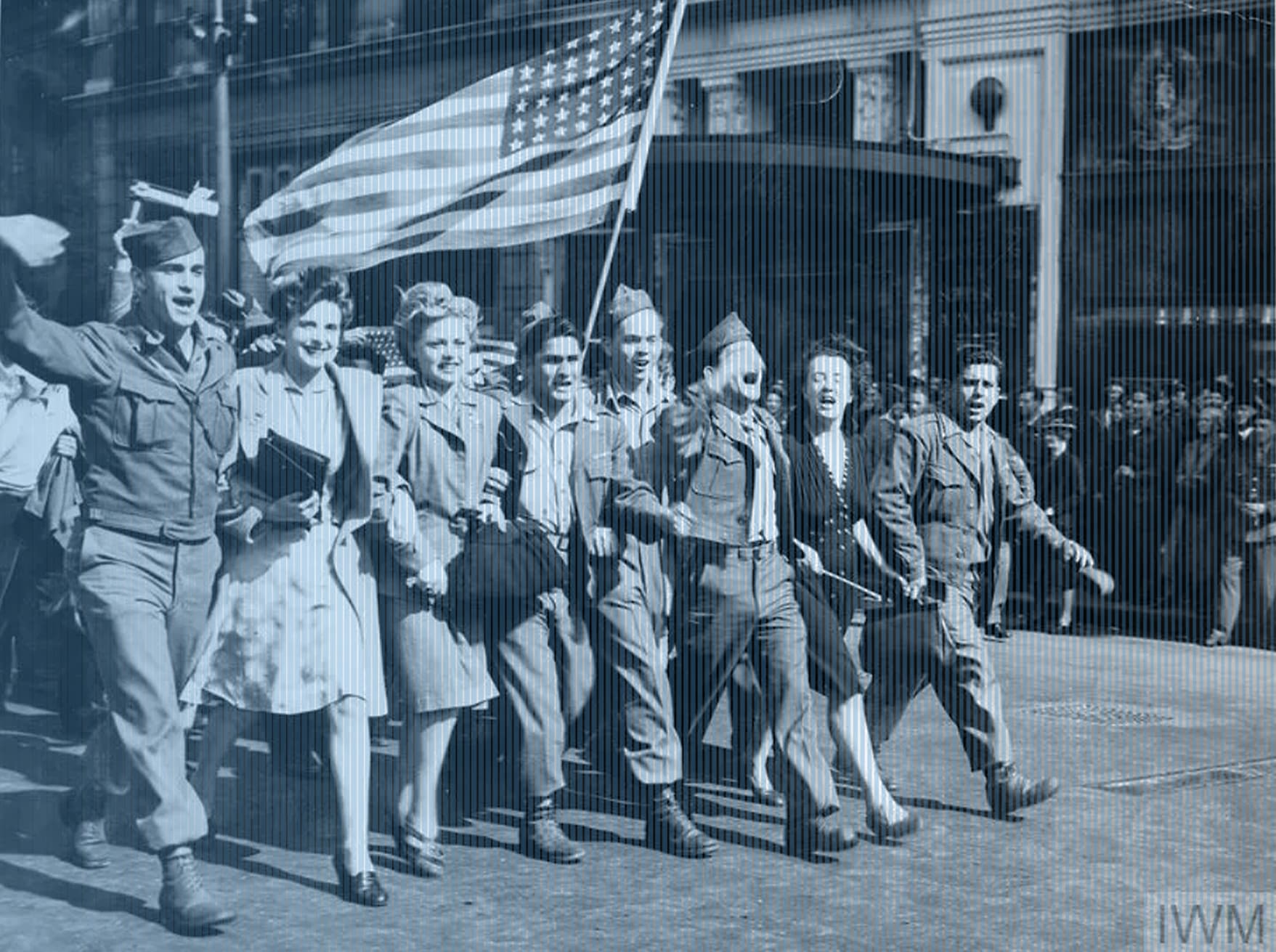We are in 1945, where the United States “doth bestride the narrow world/Like a Colossus, and we petty men/Walk under his huge legs and peep about.” (Shakespeare said it of Julius Caesar.)
When fighting in Europe ends with the Nazi surrender on May 9, the continent is left in shambles, impoverished, and immediately threatened with both internal and external communist takeovers. Some 70 million to 85 million lives have been lost in this war. Perhaps 35 million died in Europe, on the Eastern Front, and in the Mediterranean. The traditional European economic powerhouse of Germany is flattened, occupied, and divided, with 30 percent of its territory under the control of the Soviet Union.
Many of the borders in Eastern Europe and the Balkans are radically altered, and these vast territorial changes will lead to some 20 million refugees. Perhaps up to 2 million displaced persons will have died of starvation, disease, or exposure by 1950. The vast majority of them are Germans expelled from Silesia, Prussia, and Pomerania to make way for the restoration of Poland. A quarter-million Jews who survived the Holocaust are homeless.
When the war ends, more than half of some 500 Soviet rifle divisions are occupying both Eastern Europe and East Germany—even as a broke Britain and a tired America are planning to collectively demobilize more than 3 million expeditionary troops eager to leave for home as quickly as possible.
The economies and infrastructure of the losing Axis-associated powers of Germany, Italy, Austria, Hungary, Romania, Bulgaria, and Slovakia are ruined. Their political systems are near-nonexistent. Neutrals like Spain, Portugal, Sweden, and Switzerland are still in the economic doldrums. The lands of formerly German-occupied Europe—especially the Netherlands and France—have seen their economies absorbed by Nazi mercantilism and are busy hunting down former internal collaborators.
Yet the ascendant Soviet Union is even more impoverished. Its western territories are ravaged. And it has suffered 26 million civilian and military deaths.
London, Birmingham, Coventry, Liverpool, Manchester, Plymouth, Portsmouth, Sheffield, and Glasgow have all suffered significant bombing damage, along with more than 60,000 British civilian deaths due to German aerial attacks.
The British prime minister and wartime hero Winston Churchill has been summarily voted out of office, less than two months after the German surrender that he has done so much to ensure. The victorious Labour Party quickly socializes many of the main British industries, along with communications, health care, and transportation systems, while rapidly dismantling the British overseas empire. Britain is soon to become neither a world power nor an economic powerhouse.
In the Pacific Theater, an additional 35 million have died. Resource-rich European colonies in Southeast Asia, from French Indochina to the Dutch East Indies, have little desire to return to European rule and will soon be in open revolt.
The onetime industrial juggernaut Japan has been bombed into oblivion and will stay under an American proconsulship until 1952. After the Soviet Union, China has suffered the war’s greatest losses, with roughly 20 million deaths. Emerging from a ruinous Japanese occupation almost a decade long, China is immediately mired in a brutal civil war that will see the Communists in 1949 emerge victorious and partnered with newly nuclear Soviet Russia.
Only the United States has escaped the war with its civilian population untouched and its industrial base intact.
And so, by mid-May 1945, the US economy is larger than those of all the former major belligerents—Britain, China, Germany, Italy, Japan, and the Soviet Union—combined. The American Navy, both by tonnage and by number of ships, is larger than all the navies of the world combined. America’s air force is 80,000 planes strong, and likewise dwarfs all the air fleets of the world together.
Unstoppable Stalin
Almost immediately, it becomes evident that a treacherous Joseph Stalin has no intention of honoring his Yalta and soon-to-be-signed Potsdam agreements. Already he has plans to cancel free elections in the Soviet sphere of occupied Eastern Europe, absorb the formerly independent nations that the Soviet Union occupied during the war, and soon spread his communist control over a hollowed-out Western Europe.
The United States is immediately faced with a propaganda dilemma. It alone has been charged with the costly rebuilding and rehabilitation into democracies of the hated and defeated fascist powers of Germany, Italy, and Japan. Meanwhile, the postwar Soviet Union is assuring the world that its war against fascism continued under the new guise of “national liberation”—while its former British and American allies have supposedly flipped to side with the former common enemies.
In the British case, the Soviets charge that London fought World War II only to preserve its exploitative overseas empire, with the French doing the same in Southeast Asia and Algeria. In the same manner, China blasts its victorious former ally America as the new partner of the once-shared Japanese enemy.

By 1949, the global forces of communism would be led by Stalin in the Soviet Union and his new collaborator in “liberated” China, Mao Zedong. In their two countries, they rule with an iron hand a combined population of 700 million. Both have plans to communize all of Asia, Africa, and Latin America.
Only the United States possesses the wealth, the military power (including what would be a four-year monopoly on the atomic bomb), and the good will to rebuild the world economy, and keep Europe—and for good measure much of Asia, Africa, and Latin America—free of Soviet and Chinese communism, while prompting the birth or rebirth of democratic government and material well-being.
What follows is the $13 billion Marshall Plan, the American-led NATO military alliance (originally designed to “keep the Soviet Union out, the Americans in, and the Germans down”), the United Nations, and the Bretton Woods Conference that gives birth to the American-inspired World Bank and International Monetary Fund.
Success, and where it led
All these novel and predominately American-funded institutions, initiatives, alliances, and agencies were dedicated to rebirthing the world economy, keeping Western Europe democratic or at least free from Soviet occupation, and jump-starting the onetime European industrial powerhouse back to its former productivity. For the most part, these herculean postwar efforts succeeded.
But such an ambitious political, economic, and military agenda also required fundamental changes to a formerly isolationist America.
Assuming the role of a global power now entailed radical growth in government, and rapid rearmament with a swelling Pentagon budget.
Asymmetrical trade and tariff policies would allow war-torn allied economies to have relatively free access to the expanding US consumer market, while erecting protectionist barriers to nurture their own fragile reindustrialization.
To accomplish this ambitious agenda, a new bipartisan political and professional class arose, wedded to internationalism and nascent globalization. Universities began international-studies programs to train the next generation of overseas diplomats, in addition to expanding their foreign-language programs.
Military officers and intelligence operatives were now posted all over the globe, as were costly new military bases. New York and Washington became world capitals. Thousands of foreigners flocked to both cities seeking economic, political, and military support.
The cautious American taxpayer at first was willing, for both magnanimous and self-interested reasons, to foot the bill for world custodianship and—in the new Cold War—contain Soviet expansionism. By lifting up Europe and Asia, the United States would gain markets for its postwar economic juggernaut. And the domino theory emerged, postulating that unless America stopped Russian-inspired communism in Korea and Vietnam, it would grow and spread even to the shores of America.
New unknowns
Thus were established the contours of the American postwar order. As long as the United States was the pre-eminent world economic and military power, it could put up with asymmetrical European and Asian tariffs, massive foreign aid—and debt—and liberal but costly use of the US military in a variety of Cold War theaters from Berlin, Korea, and Vietnam to the Middle East and Latin America.
The problem was this: as the postwar order became ossified and former clients became wealthy patrons themselves, the rules and protocols of the 1940s did not fully adjust.
This was especially true after the fall of the Soviet Union in 1991 and the end of the communist global threat. By the start of the new millennium, America was no longer able to afford the postwar concessions provided to now-rich mercantilist Europeans and Japanese, and to emerging superpowers like China and India.
Costly misadventures in Vietnam, Iraq, and Afghanistan—in total costing over 100,000 lives and $10 trillion in inflation-adjusted currency—challenged the orthodoxies of postwar American foreign policy. Unending American trade deficits, budget shortfalls, and national debt also challenged the American ability to subsidize the militaries and economies of its often-critical allies and friends.
The hollowing out and deindustrialization of America’s interior Rust Belt because of unfair trade deals, coupled with the offshoring and outsourcing of American jobs and industries abroad by 2016, cast further doubt upon the entire calcified postwar economic order.
The great American success in restoring consensual government, capitalist economies, and ideas of universal freedom to Europe was not always appreciated abroad or at home. Instead, the United States was successively buffeted by the 1960s cultural revolution, racial tensions, the 9/11 attacks, the 2008 financial meltdown, and the riots that followed the death of George Floyd in 2020. They were accompanied by soon-to-be-unsustainable debt crises.
Everyone knew that the old system of the 1940s and 1950s was well past its prime.
But statesmen were confused over what ought to replace the alliances, commitments, and international agencies of the past eighty years.
More specifically, how was a new generation of American officials to ensure that former dependent nations became full autonomous economic and military partners? How did it come about that our World War II enemies—Germany, Italy, and Japan—are among our closest friends, and our former allies, Russia and China, are now our de facto greatest enemies?
How was an indebted United States to forge a new foreign policy that was neither doctrinairely isolationist nor interventionist in deterring radical Islam and the illiberal and often rogue regimes abroad?
The United States has spent decades searching for clarity in these diplomatic, military, and economic dilemmas. And yet there is still no definitive answer about the extent of America’s proper current and future role, both in the Western world and the international community.

Victor Davis Hanson is the Martin and Illie Anderson Senior Fellow at the Hoover Institution. A scholar of classical antiquity and military history, Hanson is a bestselling author, penning more than two dozen books, including The Second World Wars: How the First Global Conflict Was Fought and Won.
